
Cat Rescues Six Near Cabo
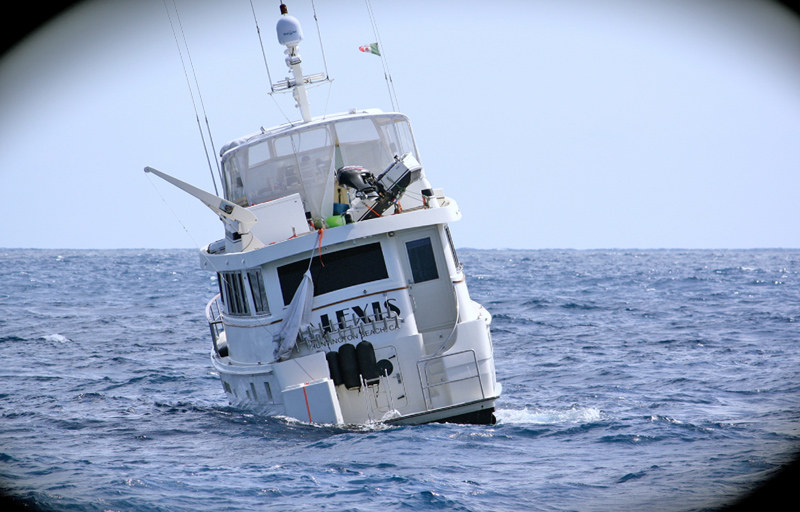
© Latitude 38 Media, LLC
"Mayday, mayday, mayday! This is the motor vessel Alexis. We are at 23°12.595N by 110°25.092W and we are sinking! Are there any boats that can hear us?"
"That’s the radio call we heard at 2 p.m. on the afternoon of July 12 while 17 miles southwest from Todos Santos," reports Geo Uhrich, the Canadian owner of the Catana 431 catamaran Our Shangri-La." The sinking boat was Emilio Castañeda’s Huntington Beach-based Hatteras 85, which had spent much of the winter at Marina de La Paz.
"We told the Alexis people not to worry because we were only six miles away and were headed to their position as quickly as possible," remembers Uhrich. "They thanked us and said there were six people aboard, including three children, and that the safety of the children was their primary concern. We told them that we estimated we could be there in less than an hour, but that we should stay in radio contact."
Joaquin Moya, the captain of Alexis, had explained that the boat’s problem was that "one of the shaft seals had exploded and water was gushing in as though from a fire hose."
A half-hour after the original contact, Joaquin reported that he, the three children, Clark (the cook) and Chris (a crewmember) were getting into the 40-hp powered RIB.
"About that time we heard a response, in Spanish, from the freighter Tula," says Uhrich. "They said they were also on their way to the scene. Two of our crew are of Mexican heritage, so I had them ask Tula if they could contact the Mexican Navy. They said they would.
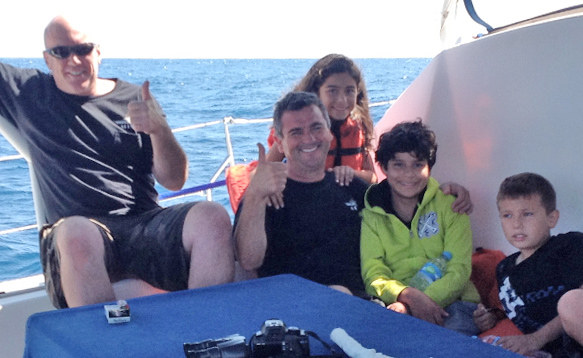
© Latitude 38 Media, LLC
"We arrived at the location of the incident to see the Hatteras listing badly to one side," says Uhrich, "with her crowded dinghy heading toward us. We threw them a line and immediately took the youngsters aboard. They were wide-eyed and seemed to be a bit shocked by the turn of events. They soon calmed down and started asking questions, such as how they were going to get home now that their boat was sinking."
The three adults returned to Alexis to retrieve the log book, personal effects, the EPIRB, a first-aid kit, some suitcases and other stuff.
"About a half-hour later Tula arrived at the scene. They were in constant contact with us by radio in Spanish as they stood off about a quarter of a mile. They advised that the Marina Mexicana Search & Rescue was on the way by fastboat from Cabo and was expected in about 90 minutes. When the SAR arrived, they took everyone from Alexis aboard. They took lots of video, and had me sign a document about the basic facts of the case and my identity."
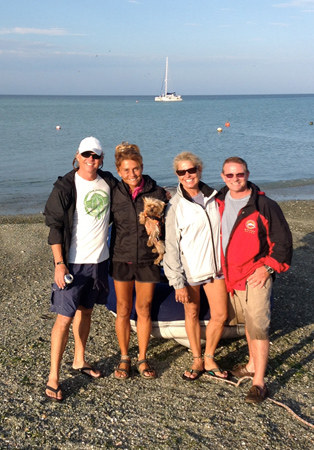
© Latitude 38 Media, LLC
The crew aboard Our Shangri-La consisted of owner/skipper Geo Uhrich, a talented fiddler who played a lot in the La Cruz area last winter, Fernanda Fenton, and crew Mike Kimbro and Carla Kutter. They had been en route to San Diego from Banderas Bay.
Lobsterman Saved by His Boots
No doubt John Aldridge’s family had just about given up hope that the Long Island lobsterman’s body would be found after he fell overboard 12 hours earlier, so when word that a Coast Guard helo crew had not only found Aldridge but that he was very much alive, they were ecstatic.
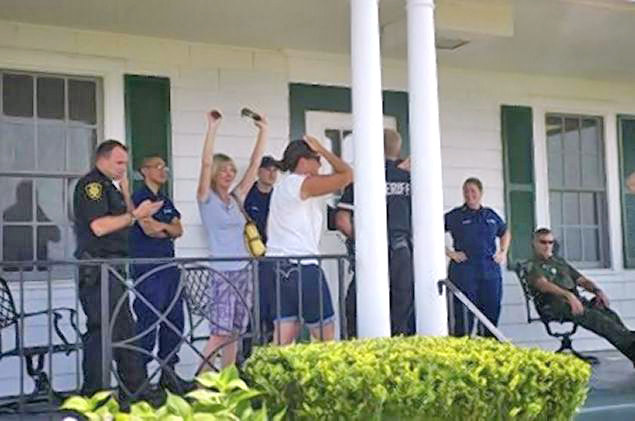
Aldridge, 45, fell overboard while the rest of the boat’s crew was asleep. It’s unclear how long he was in the water before his crewmates sounded the alarm, it took an eight-hour search by East Coast assets over 660 square miles to find the man. When a CG rescue swimmer plucked him from the waters 43 miles south of Montauk, New York, he was clad only in a T-shirt and shorts.
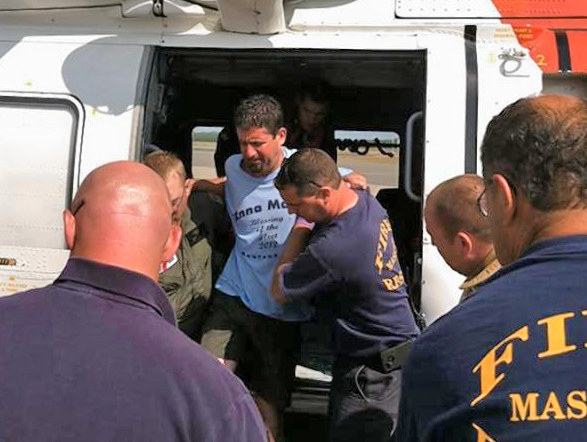
The fact that Aldridge was able to avoid hypothermia, drowning and circling sharks is a miracle, but add to that the fact that he wasn’t wearing a PFD and prepare to have your mind blown. It turns out Aldridge tucked his rubber boots under his arms to keep himself afloat!
"Unfortunately many of these cases don’t end with a happy ending," noted PO Erik Swanson. "With that many hours passed, it’s hard to say with the currents and the temperature of the water. Luckily everything came together for us." Aldridge was treated for dehydration, exposure and hypothermia, then released.
Search Continues for Niña and Crew
Errata With Regard to the African Diaspora Maritime Lawsuit
In the July 24th edition of ‘Lectronic Latitude we reported that a lawsuit brought by African Disapora Martime against the Golden Gate YC was being heard in New York City. The North Carolina organization claims that the Golden Gate YC illegally refused their application to be allowed to compete against Oracle to be the Defender in the 34th America’s Cup.
In our report we said that the ADM had not been able to come up with the initial $25,000 deposit needed to compete. This was incorrect. The ADM in fact did present the Golden Gate YC with a draft for $25,000, but were still denied entry because the yacht club didn’t believe ADM had the wherewithal to field a competitive entry. We sincerely apologize for the error. Indeed, we had previously reported the facts correctly.
As we wrote on Wednesday, we’re all in favor of a legitimate African-American America’s Cup team. Indeed, we’re in favor of every kind of legitimate America’s Cup team. We’ll leave it up to the courts to decide whether ADM would have been a legitimate entry.
